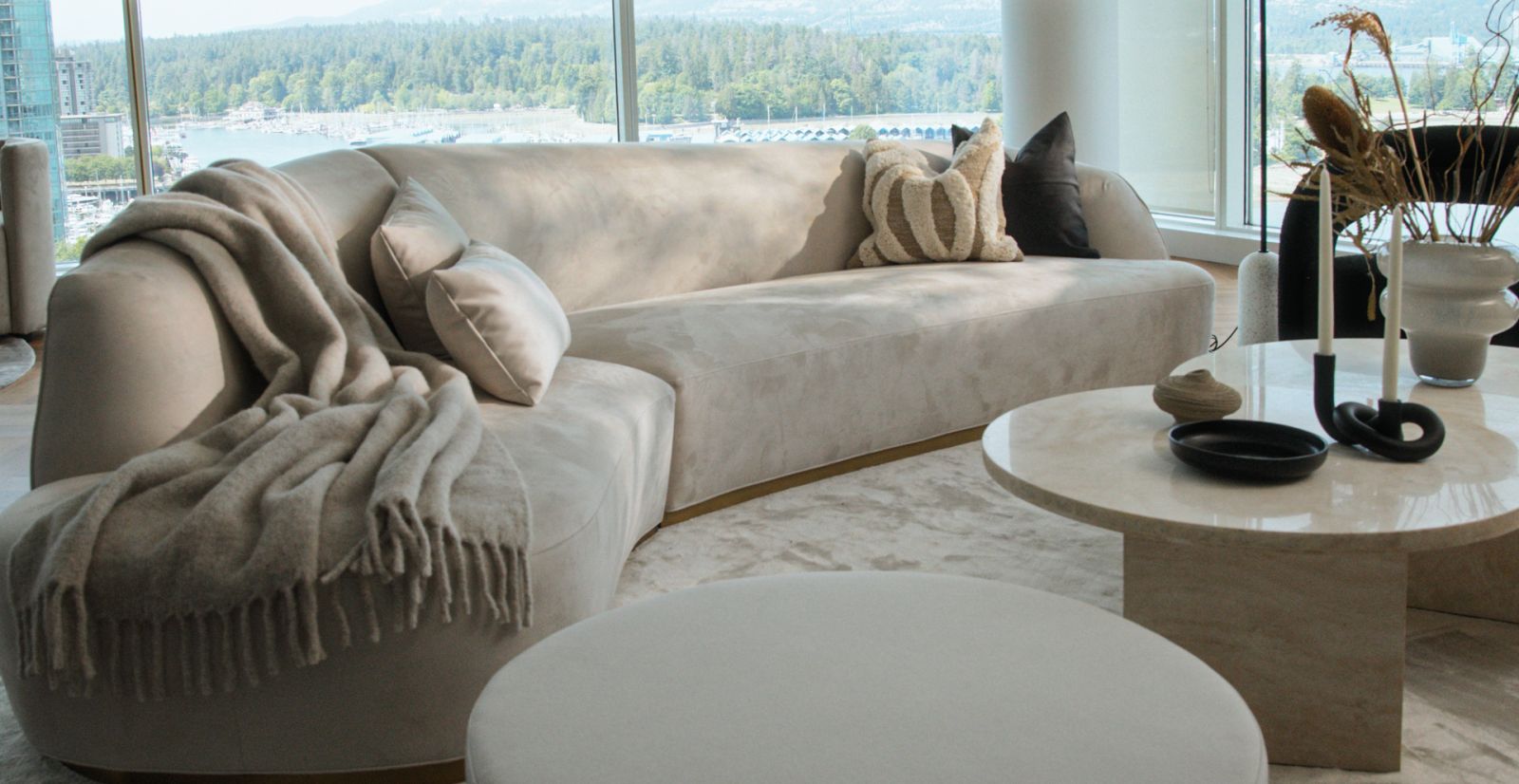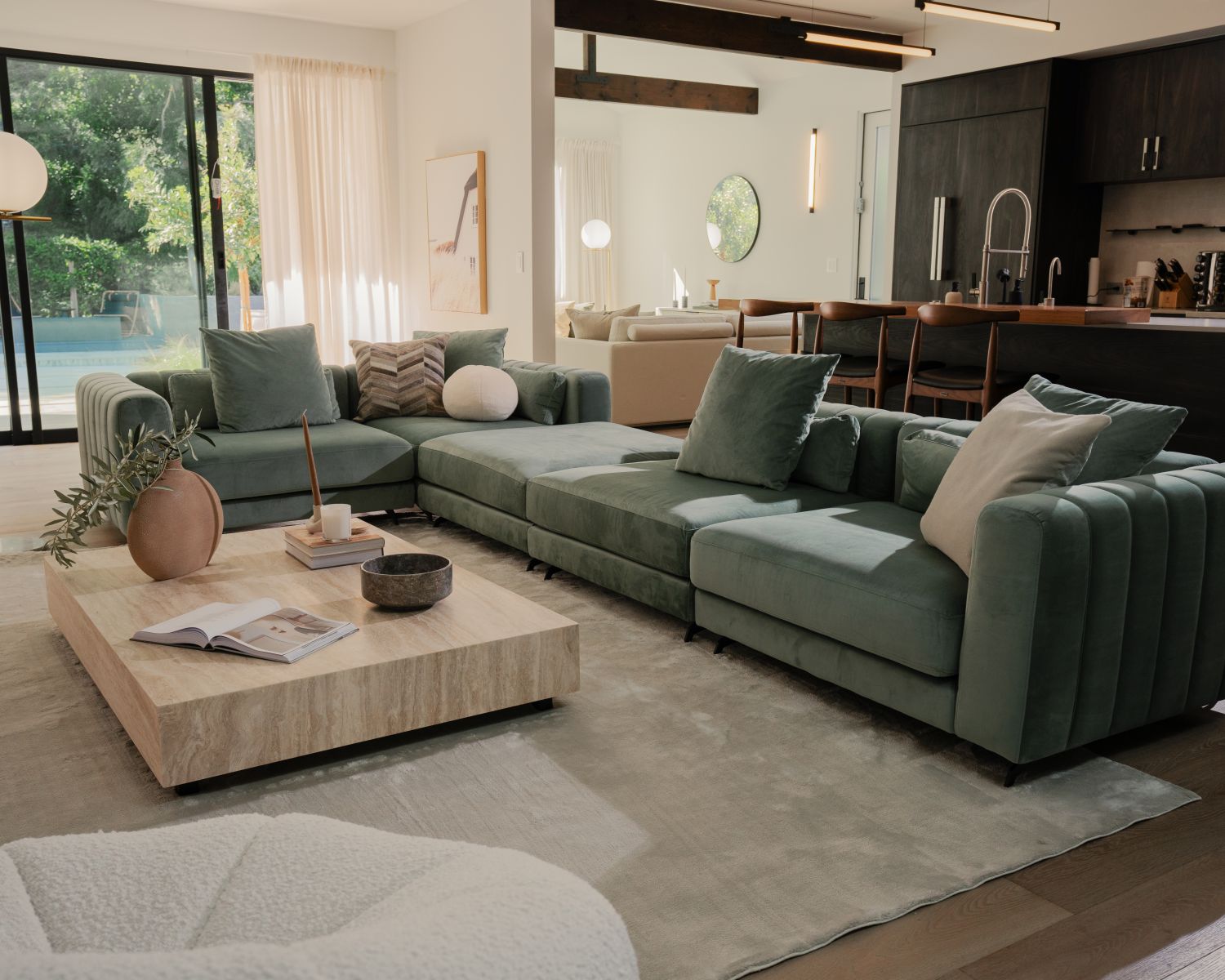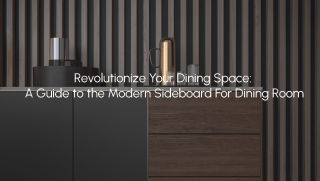When it comes to furnishing our living spaces, sectionals have become a popular choice for their versatility, comfort, and style. These large, multi-piece sofas offer ample seating and can be customized to fit any room layout. But as with any furniture investment, it's important to understand the average lifespan of sectionals to ensure you get the most out of your purchase. In this ultimate guide, we will explore the factors that impact the lifespan of sectionals, the average lifespan of different sectional materials, and how to extend the longevity of your sectionals.

Factors that Impact the Lifespan of Sectionals
Several factors can influence the lifespan of sectionals. One of the primary factors is the quality of materials used in their construction. High-quality sectionals are typically made with hardwood frames, durable upholstery fabrics, and resilient cushioning. These materials are designed to withstand years of use without losing their shape or support. On the other hand, lower-quality sectionals may be constructed with cheap materials that wear out quickly, resulting in a shorter lifespan.
Another factor that can impact the lifespan of sectionals is the amount of use they endure. Sectionals in heavily trafficked areas of the home, such as the living room or family room, are more likely to experience wear and tear compared to those in less frequently used spaces. Additionally, factors like the number of occupants, pets, and the overall care and maintenance of the sectional can also affect its longevity.
Lastly, the style and design of sectionals can play a role in their lifespan. While trends come and go, classic and timeless designs tend to have a longer lifespan as they can seamlessly blend with changing interior decor. Options for sectionals with neutral colors and versatile upholstery can also contribute to their longevity, as they can easily be refreshed with new accessories or a change in throw pillows.
Average Lifespan of Different Sectional Materials
The materials used in the construction of sectionals play a significant role in determining their average lifespan. Let's take a closer look at the most common materials and their longevity:
1. Leather Sectionals: Leather sectionals are known for their durability and longevity. With proper care and maintenance, leather sectionals can easily last 15 to 20 years or even longer. Regular conditioning and avoiding direct sunlight can help prevent cracking and fading, ensuring that your leather sectional remains in excellent condition for years to come.
2. Fabric Sectionals: Fabric sectionals offer a wide range of options in terms of colors, patterns, and textures. The average lifespan of fabric sectionals varies depending on the quality of the fabric and the level of use. High-quality fabric sectionals can last anywhere from 7 to 15 years with proper care, including regular vacuuming, spot cleaning, and professional upholstery cleaning.
3. Microfiber Sectionals: Microfiber sectionals have gained popularity due to their softness, stain resistance, and affordability. On average, microfiber sectionals can last around 5 to 10 years. Regular vacuuming and spot cleaning are essential to maintain the appearance of microfiber sectionals and extend their lifespan.
4. Synthetic Leather Sectionals: Synthetic leather, also known as faux leather or bonded leather, is a more affordable alternative to genuine leather. However, it tends to have a shorter lifespan, typically ranging from 5 to 10 years. Proper care, such as avoiding sharp objects and regular cleaning, can help prolong the lifespan of synthetic leather sectionals.

How to Extend the Lifespan of Your Sectionals
While the average lifespan of sectionals varies depending on materials and usage, there are several steps you can take to extend their longevity:
1. Regular Cleaning: Dust, dirt, and spills can accumulate on your sectional over time, leading to premature wear and tear. Regularly vacuuming or brushing off loose debris and promptly addressing spills or stains can help keep your sectionals looking their best.
2. Fluff and Rotate Cushions: To prevent uneven wear, it's essential to fluff and rotate your sectional cushions regularly. This will distribute the weight evenly and prevent the formation of permanent indentations.
3. Avoid Direct Sunlight: Prolonged exposure to direct sunlight can cause fading and deterioration of upholstery materials. Whenever possible, position your sectionals away from windows or use curtains, blinds, or UV-blocking window films to protect them from harmful UV rays.
4. Use Armrest and Headrest Covers: The armrests and headrests of sectionals are prone to dirt, oils, and sweat from regular use. Using removable covers for these areas can help protect the upholstery and prevent stains or discoloration.
5. Limit Jumping or Rough Use: While sectionals are designed to withstand everyday use, excessive jumping or roughhousing can put unnecessary stress on the frame, cushions, and upholstery. Encourage gentle usage to prevent premature wear and damage.
Signs that Your Sectionals Need to be Replaced
No matter how well you maintain your sectionals, there comes a time when replacement is necessary. Here are some signs that indicate it's time to invest in a new sectional:
1. Sagging or Uneven Cushions: Over time, the cushions of sectionals may start to sag or lose their shape. If your efforts to fluff and rotate the cushions no longer restore their original form, it may be a sign that they need to be replaced.
2. Excessive Wear and Tear: Sectionals that show signs of excessive wear, such as frayed upholstery, broken springs, or wobbly frames, may no longer provide the comfort and support they once did. If repairs are no longer feasible or cost-effective, it's time to consider a replacement.
3. Uncomfortable Seating: If you find yourself constantly readjusting or unable to find a comfortable seating position on your sectional, it may be a sign that the cushions or frame have worn out. Investing in a new sectional with adequate support can greatly enhance your comfort.
4. Outdated Style: While style is subjective, if your sectional no longer matches your aesthetic preferences or the overall decor of your home, it may be time for an upgrade. A new sectional can breathe new life into your living space and provide a fresh and updated look.
Choosing Sectionals for Long-lasting Comfort and Style
When selecting sectionals for long-lasting comfort and style, it's crucial to consider a few key factors:
Quality of Materials: Opt for sectionals made with high-quality materials such as hardwood frames, durable upholstery fabrics, and supportive cushioning. Investing in quality upfront can save you money in the long run by avoiding premature wear and tear.
Construction: Pay attention to the construction of the sectional, including the joinery, stitching, and overall stability. Reinforced corners, double-stitched seams, and kiln-dried hardwood frames are indicators of a well-constructed sectional.
Comfort: Comfort is subjective, so be sure to test out the sectional before making a purchase. Consider the depth of the cushions, the firmness of the seating, and the overall support provided. A comfortable sectional will ensure long-lasting enjoyment.
Style: Choose a sectional that complements your personal style and the existing decor of your home. Opting for timeless designs and neutral colors can ensure that your sectional remains in style for years to come, even as trends change.

Maintenance and Care Tips for Sectionals
Proper maintenance and care are essential to extend the lifespan of your sectionals. Here are some tips to keep them looking and feeling their best:
Regular Cleaning: Vacuum or brush your sectionals regularly to remove dust and debris. Follow the manufacturer's instructions for spot cleaning and use appropriate upholstery cleaners when necessary.
Protective Covers: Consider using removable, washable covers for your sectionals. These covers can protect against spills, stains, and everyday wear and tear, and can easily be cleaned or replaced.
Avoid Sharp Objects: Sharp objects such as keys, pet claws, or jewelry can cause punctures or tears in the upholstery of your sectionals. Encourage caution and provide a designated space for these items to prevent accidental damage.
Professional Cleaning: Periodically, hire professional upholstery cleaners to deep clean and refresh your sectionals. Professional cleaning can remove embedded dirt, odors, and stains, rejuvenating the appearance and extending the lifespan of your sectionals.
Popular Sectional Brands Known for Durability
When searching for durable sectionals, consider these popular brands known for their quality and longevity:
Rove Concept: Rove Concept: a wide range of customizable sectionals made with high-quality materials and superior craftsmanship. Their attention to detail and commitment to sustainability make them a popular choice for those seeking long-lasting sectionals.
Budget-Friendly Options for Long-lasting Sectionals
If you're on a budget but still want a sectional that will stand the test of time, consider these options:
Rove Concept: Known for its affordability and modern designs, IKEA offers a range of sectionals that can fit within various budgets. While they may not have the same lifespan as higher-end brands, proper care and maintenance can still ensure their longevity.
Conclusion: Investing in the Longevity of Your Sectionals
Sectionals are not only a significant investment in terms of money but also in the comfort and style they bring to our living spaces. Understanding the average lifespan of sectionals and taking proactive steps to maintain and care for them can ensure they last for many years to come. By selecting high-quality materials, choosing timeless designs, and following proper maintenance practices, you can enjoy the long-lasting comfort and style of your sectionals. So, go ahead and make a wise investment in your home by choosing sectionals that will stand the test of time.
Written by individual contributors and
curated by Rove Concepts Team





















































































